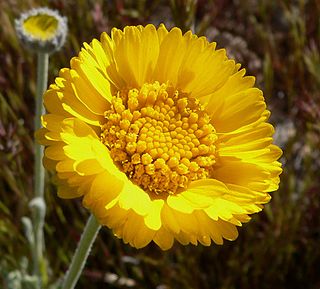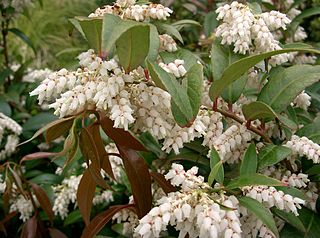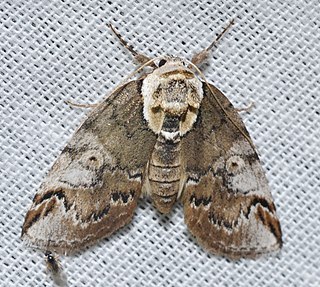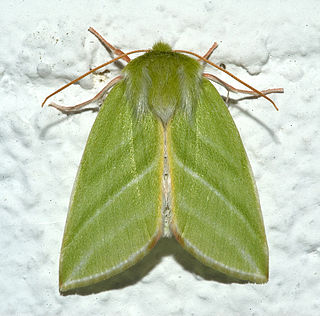
Louisiana is a state in the Deep South region of the South Central United States. It is the 31st most extensive and the 25th most populous of the 50 United States. Louisiana is bordered by the state of Texas to the west, Arkansas to the north, Mississippi to the east, and the Gulf of Mexico to the south. A large part of its eastern boundary is demarcated by the Mississippi River. Louisiana is the only U.S. state with political subdivisions termed parishes, which are equivalent to counties. The state's capital is Baton Rouge, and its largest city is New Orleans.

Calamondin, also known as calamansi, is an economically-important citrus hybrid predominantly cultivated in the Philippines. It is native to the Philippines and surrounding areas in southern China, Taiwan, Borneo, and Sulawesi. Calamondin is ubiquitous in traditional Filipino cuisine. It is used in various condiments, beverages, dishes, marinades, and preserves. Calamondin is also used as ingredients in the cuisines of Malaysia and Indonesia.

Baileya is a genus of plants in the aster family Asteraceae. All are native to the southwestern United States and to Mexico.

Baileya multiradiata is a North American species of sun-loving wildflowers native to the deserts of northern Mexico and the Southwestern United States. It has been found in the States of Sonora, Chihuahua, Coahuila, Durango, Aguascalientes, California, Arizona, Nevada, Utah, New Mexico, and Texas.

Baileya is a genus of moths of the family Nolidae.
Baileya pauciradiata is a North American species of flowering plant in the daisy family which is known by the common names laxflower and Colorado desert marigold. It is native to the deserts of northwestern Mexico and the Southwestern United States. It has been found in the States of California, Arizona, Nevada, Baja California, and Sonora.

Baileya pleniradiata is a North American species of flowering plant in the daisy family, known by the common name woolly desert marigold. It is native to desert regions of the southwestern United States and northern Mexico, where it grows in sandy habitats. It has been found in the States of Chihuahua, Sonora, Baja California, Arizona, Utah, and Nevada.
Baileya acadiana is a moth of the family Nolidae. It is found in Alabama, Arkansas, Louisiana, Mississippi and Texas.

Citrofortunella are a large group of commercial hybrids that cross the kumquat with other citrus. In the system of citrus taxonomy established by Swingle, kumquats were placed in a different genus, Fortunella, from Citrus, which included citron, mandarin orange, pomelo and papedas. Such hybrids would then represent intergeneric hybrids, and a novel genus name was coined for them in 1975, by making a portmanteau of the names of the contributing genera to form Citrofortunella. That the genus is of a hybrid nature is indicated by a multiplication sign before the genus name, for example × Citrofortunella microcarpa. Recent phylogenetic work has shown kumquats to fall within Citrus rather than representing a distinct genus, meaning these would no longer represent intergeneric hybrids, and use of Citrofortunella as a distinct genus name for these hybrids loses taxonomic validity. They would instead fall within Citrus.
Baileya is a scientific journal of horticultural taxonomy, published quarterly by the Liberty Hyde Bailey Hortorium. The journal was established in 1953, but is currently inactive. Its name honors the late Liberty Hyde Bailey.

Leucothoe axillaris is a shrub native to the southeastern United States, with the common names swamp dog-laurel and coastal dog-hobble. It has been reported from Louisiana, Mississippi, Alabama, Florida, Georgia, North and South Carolina and Virginia. It grows on floodplains in coastal areas at elevations of less than 200 me.
Ira Schreiber Nelson (1912–1965) was an American botanist, working in Louisiana.
Citrus wintersii, the Brown River finger lime, is a shrub native to the Brown River region in Papua-New Guinea. It was previously known as Microcitrus papuana. It has, as the "finger" name suggests, a small, thin fruit, pointed at both ends. It grows near Port Moresby.

Baileya australis, the small baileya moth, is a species of moth of the family Nolidae. It is found in North America, where it has been recorded from Quebec and New York to Florida, west to Texas, north to North Dakota and Ontario.

Baileya levitans, the pale baileya, is a species of nolid moth in the family Nolidae. It was described by Smith in 1906 and is found in North America.
Baileya dormitans, the sleeping baileya, is a species of nolid moth in the family Nolidae. It is found in North America.

Baileya ophthalmica, the eyed baileya, is a species of nolid moth in the family Nolidae. It is found in North America.
Baileya doubledayi, or Doubleday's baileya, is a species of nolid moth in the family Nolidae. It is found in North America.














